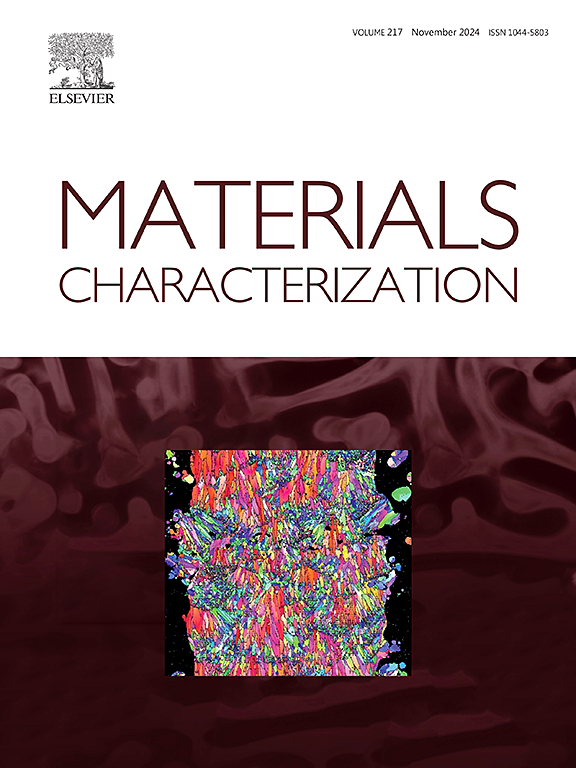Effect of standoff distance on interfacial characteristics and mechanical properties of Al/Cu MPW joints
IF 4.8
2区 材料科学
Q1 MATERIALS SCIENCE, CHARACTERIZATION & TESTING
引用次数: 0
Abstract
In this work, Al6082-T6 to Copper were effectively joined by magnetic pulse welding (MPW). The interfacial characteristics and mechanical properties of joints were investigated at different standoff distances and constant input voltage by SEM, EDS, XRD analyses, microhardness and shear strength tests. SEM results showed that the various interface microstructures such as wakes, vortices, intermediate pocket/layer and porous structure were unveiled due to the diverse impact velocities. The XRD results from the fracture surface of the Cu side exhibited the formation of intermetallic compounds including Al2Cu, AlCu and Al4Cu9 at standoff distances of 2.3, 3 and 4 mm which is caused by melting and subsequent accelerated element interdiffusion at the weld interface. Microhardness test results indicated the increased hardness of weld interface for all weld joints as a result of the work hardening of presence of the intermetallic compounds. Shear strength test results demonstrated that the highest shear forces are obtained as 12,300 and 13,500 N for weld made at standoff distances of 1.5 and 2.3 mm. These joints showed the failure of the base metal during shear test manifesting the adequate strength. Other weld samples had lower shear force and revealed failure of the weld zone owing to the presence of microcracks, pores, cavities and unbonded areas at the weld interface. Fractography analyses disclosed the appearance of large dimple area and small brittle area in fracture surface for standoff distance of 3 mm. Also, at standoff distance of 4 mm, splash droplets were observed in fracture surface suggesting the melting and evaporation of aluminum.
求助全文
约1分钟内获得全文
求助全文
来源期刊

Materials Characterization
工程技术-材料科学:表征与测试
CiteScore
7.60
自引率
8.50%
发文量
746
审稿时长
36 days
期刊介绍:
Materials Characterization features original articles and state-of-the-art reviews on theoretical and practical aspects of the structure and behaviour of materials.
The Journal focuses on all characterization techniques, including all forms of microscopy (light, electron, acoustic, etc.,) and analysis (especially microanalysis and surface analytical techniques). Developments in both this wide range of techniques and their application to the quantification of the microstructure of materials are essential facets of the Journal.
The Journal provides the Materials Scientist/Engineer with up-to-date information on many types of materials with an underlying theme of explaining the behavior of materials using novel approaches. Materials covered by the journal include:
Metals & Alloys
Ceramics
Nanomaterials
Biomedical materials
Optical materials
Composites
Natural Materials.
 求助内容:
求助内容: 应助结果提醒方式:
应助结果提醒方式:


